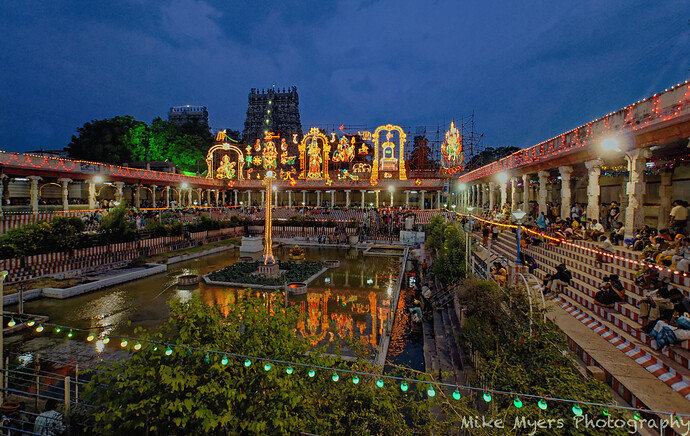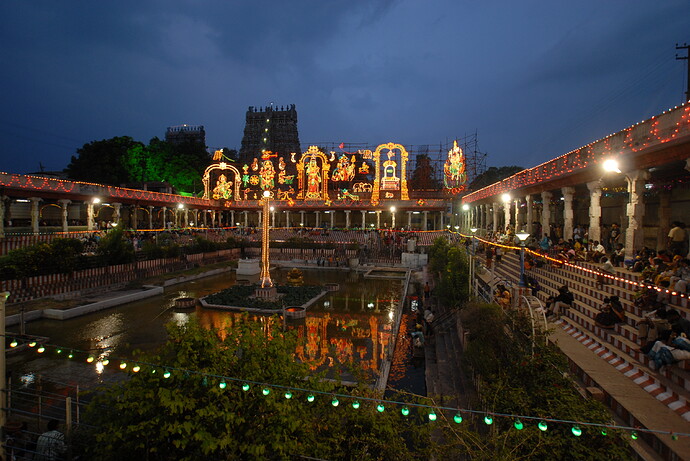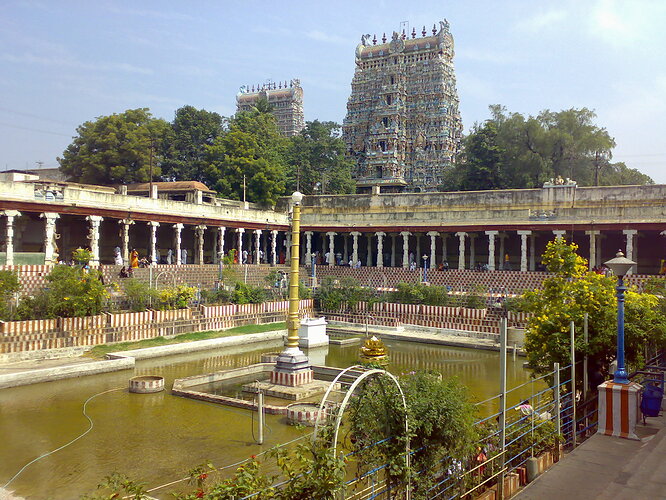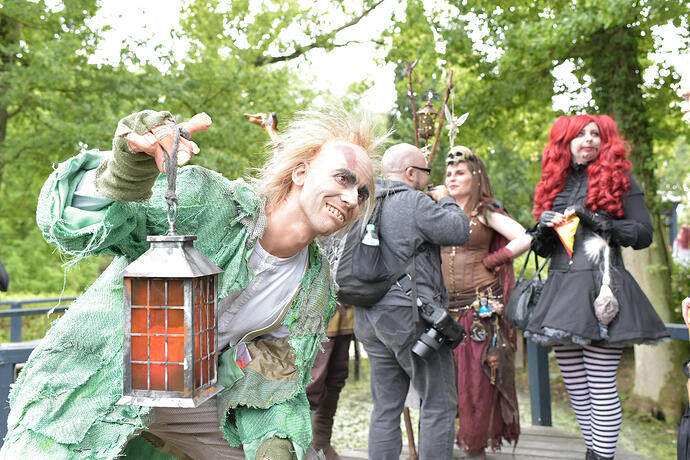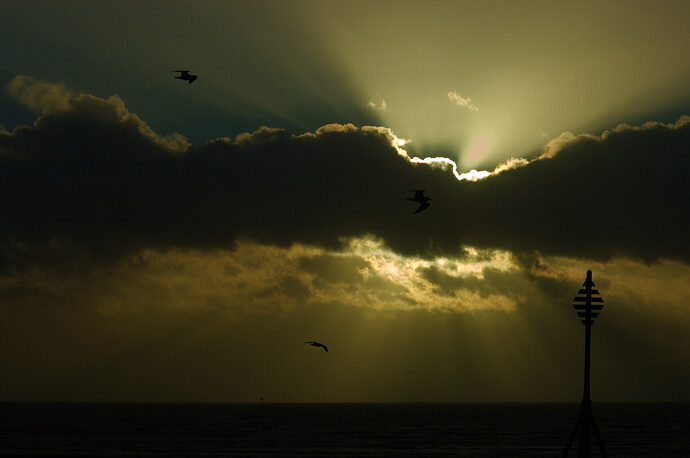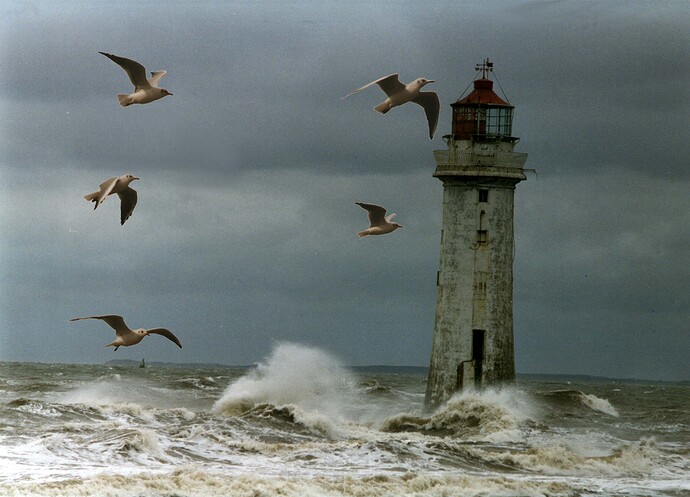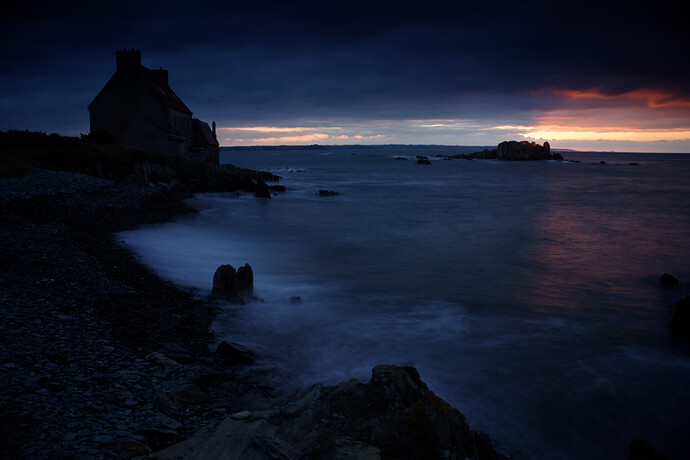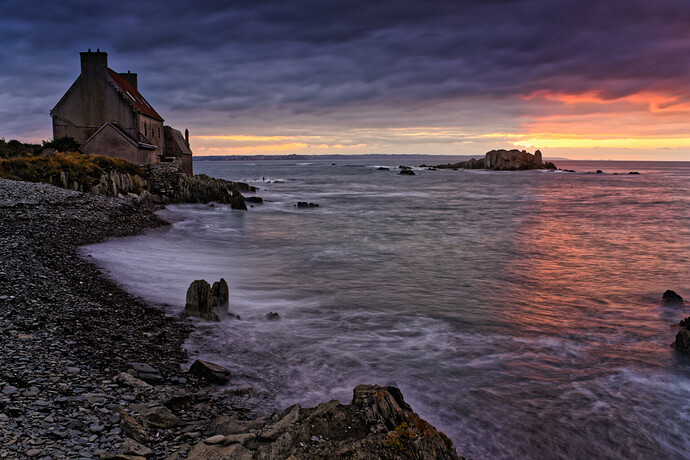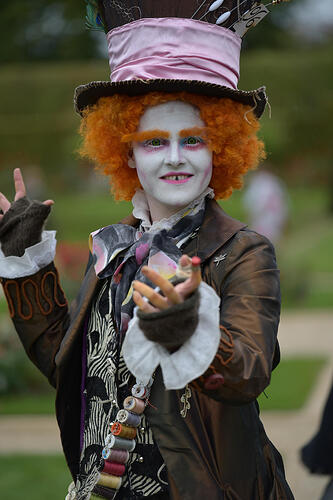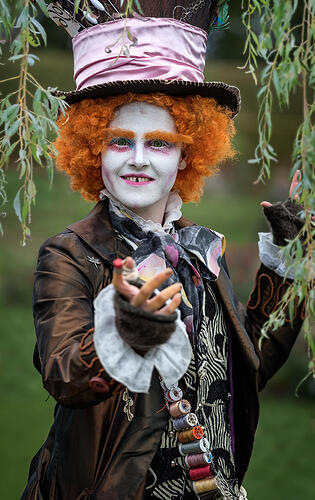I’m the same. I find it helps not to have too high a confidence in the first place that I will achieve it. It makes success much sweeter. ![]()
Thinking about what you wrote. I don’t really have SmugMug followers currently. Maybe back when I was covering the radio control car races I did. Nowadays they are for friends and family, as it’s easier to send them a link than to copy/paste to everyone. Where else do I post photos? Here in this forum, for feedback, and on the Leica forum.
I don’t feel restricted to only photojournalism photos, as long as I identify anything beyond that as a photo illustration in the description.
Maybe it’s time to be more creative, and go for “art”. Nothing stopping me. But this will be in addition to my usual photos, not instead of.
I’m confused - if this started out as a photograph, how did you turn it into a “painting”?
It’s no use. I went way back to my photos from 2007, taken with my Nikon D200 with a cheap zoom lens set to 11mm to capture as much of the temple as possible. I figured I would go through all the possible settings, see which I like, and which made things worse.
First surprise - I never realized how bad the D200 with that inexpensive Tamron 11-18 lens was. PL4 had both in the database, and made some big corrections to the original image. (Back in 2007 I’m sure I thought it was fantastic!)
As suggested I tried lots of things in editing, but most made the image look worse. I’m shocked though, when I click on the COMPARE button. I used to think the original was pretty good - and I had no idea how to make it much better. DxO made it trivial to fix anything I didn’t like. I guess I found enough good things to do, that I think added up to a nice result.
The photo of Meenachi Temple in Madurai, India, was taken in 2007, and I’ll probably never get a chance to do it again, better. For starters, thanks to the virus, I’m not sure if/when I’ll be able to go back to India. Also, to prevent explosives being smuggled into the temple, cameras and smart phones and tripods are banned. Finally, the temple is lit up like this only on special occasions, and while I used to visit for many months at a time, now I’ll be lucky if I get back for a few weeks.
Tomorrow I’ll take a photo of something I can go wild editing with PL4. Not tonight. As to the discussion about being a photograph or a photo illustration, to me, it’s still a photograph. I did use the PL4 Repair Tool to get rid of some wires and stuff at the edges of the photo. I thought about doing something about the very strong lights and the glare, but I decided it wouldn’t look real, and I sort of like the lights the way they are.
I’ll also post a photo here of what the scene looks like in daylight. As I recall, I took it with a Nokia N73 mobile phone many years before.
MJM_3292_DxO.tif (15.4 MB)
It’s all about imagination. – The protagonist (Der Glöckner von Notre-Dame / The Hunchback of Notre-Dame) was taken at Elfia in Arcen / NL and the background photo long time ago in Aix-en-Provence / F.
Maybe you heard about fantasy fair conventions, where people meet to show off. I didn’t expect this one to turn up, but quickly grabbed the wideangle-camera to get the shot.
have fun, Wolfgang
Well, the imagination was great, and so was your skill at doing it so convincingly, even changing the background behind the guy’s hair. The “composite photo” looks more realistic than the original.
Not knowing it was a wide-angle shot, the “real” photo looks fake to me as if you had placed the fellow on top of the photo, but in the …artistic… photo, both foreground and background go beautifully with each other.
Well done!!! …and thanks for the explanation. To me, it’s like magic, and magicians never give away their tricks to fool people. ![]()
Are you still involved in photojournalism? If so, for the photos you take in that area, follow those rules. But for the rest of your photography - enjoy yourself!
But it’s a single file straight out of the camera, in the same way that I would have created a single film negative by double exposure. It’s not illustrative, it’s factual - but my camera couldn’t cope with the range of exposure necessary to avoid flare on the candle flame. It’s not a “trick” - what my eye saw was a candle flame without flare, so that is what I recorded. I didn’t add anything - I just opened the shutter twice on the same shot.
But why? Most people don’t really care about how you achieved an image, they just enjoy a good image ![]()
Years ago, I entered this photo…
… into a club competition. The judge criticised it because he thought I had added the “perfectly placed” (his words) seagulls in Photoshop. I hadn’t, I had just taken a dozen shots and chose the best.
So, even if you are “honest”, there will always be someone who thinks you’ve “cheated” anyway. Life’s too short to try and please everybody. Just get out there and create the images that please you.
P.S. On the other hand, if you are going to cheat, at least do it better than this…
![]()
You are right, most people won’t care about the ethics of how I achieved an image, but I care.
Sort of like what I’m thinking about, instead of giving you the benefit of the doubt, he though you were “cheating”. Why would he think that? Because it’s all to easy to “cheat”. Assuming the rules specified original photos, he should have given you the benefit of the doubt - but let’s get back to this forum for a second, if PhotoShopping is banned, why would PL4 be acceptable? And to a new photographer, what I call “cheating” is no longer a big deal, as I think anyone can do it with a smart phone. That’s all the more reason why a “code of photographic ethics” should exist, to say what is, and is not, acceptable.
My head is spinning. I find it much more enjoyable to discuss how to improve images using PL4 as an editor, than to discuss the ethics of images. I guess I’m too stuck in the past, and too stubborn to accept that maybe those rules are no longer as useful as they were before digital came along.
George
Excellent, I need to save this link. It has a section on
a “Code of Ethics” and also a section on
“Why Manipulation Matters”,
What counts as Manipulation, and
How is manipulation detected".
Not only that, but:
“all photographers submit original camera files for entries remaining in the second to last round”.
I read all the text, and watched the videos. As a photojournalist, it all makes sense, and is essentially what I was taught, but it goes much further.
They are being very strict as to what defines a photograph, and how to prove it.
I guess the things they are disallowing, would all become “photo illustrations”.
Thank you for posting - the next time I get into a similar discussion, I will remember this link.
Good! It isn’t about making a image. ![]()
It’s about , mostly rawfiles because those can be molded the most, trying out things.
Streetlight and shadows great for working out how many ways there are to compres highlight and lift shadows. Does it look unreal? Most likely.
Take flowers and create a flower in a different color in post.
It isn’t about ending up with something you might export to keep.
This is all about the HSL tool. Finding out what it could do for me.
When it just was made and given to us by dxo i was intriqued. Do i like it? Do i need it? Can i understand it’s working?
Fooling around do things just because i can , see what happens and can i counter upcomming problems?
And i did the same for controlpoints. Brush Masking, invert , copy modify all kinds of trick’s and skills. Did i end up with real endresults? Yes do you like them as in would they be reality? No not all but those blunt overstretched tryouts are the bases for the subtle corrections i can do now on other images.
![]()
Which is all very well and good if you are submitting work that has to be factually accurate but, unless that is your current job, don’t limit yourself unnecessarily to such strict codes.
Anyhow, that code seems more concerned with adding things to images rather than simply improving its visual qualities…
Entrants are encouraged to explore techniques that serve the cause of visual journalism. Different cameras and lenses can achieve particular effects. Varying aperture and exposure settings can record the scene in different ways. Altering ISO settings and the use of flash lighting enables less visible situations to be recorded.
This means photography gives us a creative interpretation of the world.
Especially with RAW files, you have usually got to do some “manipulation” simply to get the image into a viewable state.
Let me cite again one of my favourite examples of the need for such manipulation…
SOOC
After PhotoLab
This is what I really saw and experienced when I was taking the shot.
But it’s not just edited in PhotoLab to rebalance the distribution of tones, I also had to use two physical graduated neutral density filters at different angles in order to bring the range of light to within the capabilities of the sensor.
All these “manipulations” in no way detract from the ethics of making an image that reflects truly what the photographer experienced at the time. OK, I removed the flare on the rocks to the right but that is an artefact of the lens on the camera, not what I could see with my eyes.
With my eyes I could also see a great deal more detail in the shadows but, in order to avoid that horrendous over-processed HDR look, I chose to represent the shadows in a way that makes sense to someone viewing the image.
Mike, I’m not suggesting you loosen up on your ethics (when it comes to journalistic integrity), just that, as @Wolfgang says, you take time to enjoy making images which are not destined for the scrutiny of journalistic competition judges ![]()
Oh, and if you really want to challenge your ethics…




@Joanna, thank you for this link – very cinematic!
Wolfgang
just checked for this guy and came across https://blog.flickr.net/en/2020/12/28/16-questions-about-one-photo-with-blaise-arnold/ >> question 12.
Muhahaa! Best answer!
what is reality – does it matter?
@mikemyers – it’s all about fun, not to fool people
Enjoy and don’t limit yourself,
Wolfgang
Some other example of manipulation https://en.wikipedia.org/wiki/Censorship_of_images_in_the_Soviet_Union.
Or google on ‘there’s no way like the american way’.
https://www.wikiwand.com/en/Margaret_Bourke-White.
You will find full images and cropped images. The last one without the black people, a complete different message.
George
To be honest, by the time I got a third of the way through these photos, I saw a nice collection of photos from the past, with a third of the photo blocked by stuff added on later - I found my self feeling annoyed that I couldn’t see the entire original photo.
I’m sure a lot of work went into doing this, but it was completely wasted on me, not to mention that the person(s) who captured the real image aren’t getting credit for the photo.
I found myself staring at the background, paying next to no attention to the stuff blocking my view.
Ethics? if ethics were involved, the original photographer should be given credit. To me, the new stuff added on top just damages the photo that I find myself wanting to see.
Since this is a forum, can I ask how each of you would feel, were someone to do this on top of one of your images, without your permission?
I guess how I felt, is when I go to a movie theater, and can’t see the whole screen because of someone sitting in front of me, blocking my view. Annoyed would be pretty close, but I’m sure I would have changed seats long before I got to the end.
Actually, you are seeing the entire original image - or should I say images, composite that is? Blaise takes every part of the photo himself, travelling to locations, finding props and models and photographing some of them in situ and sometimes others, like the props and models, in a studio.
See this interview here for more insights…
Then he assembles everything to make the one overall image.
